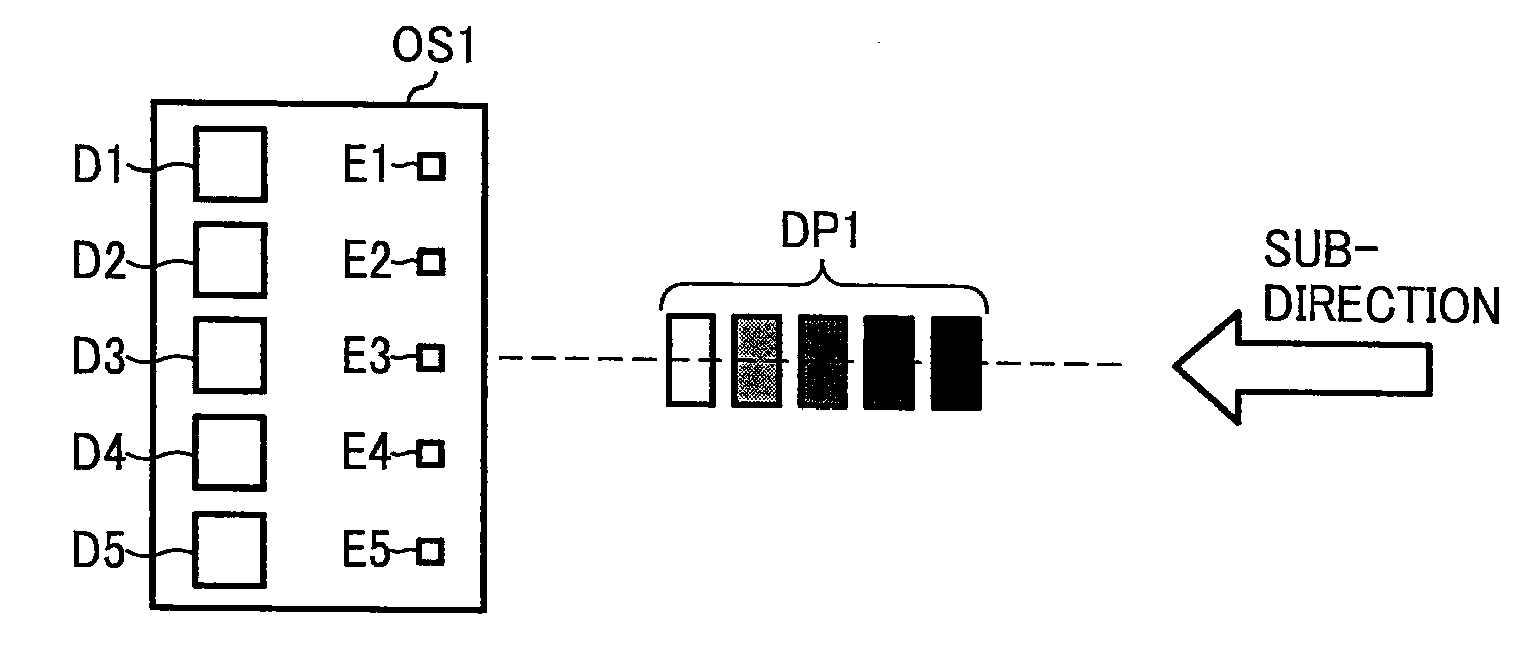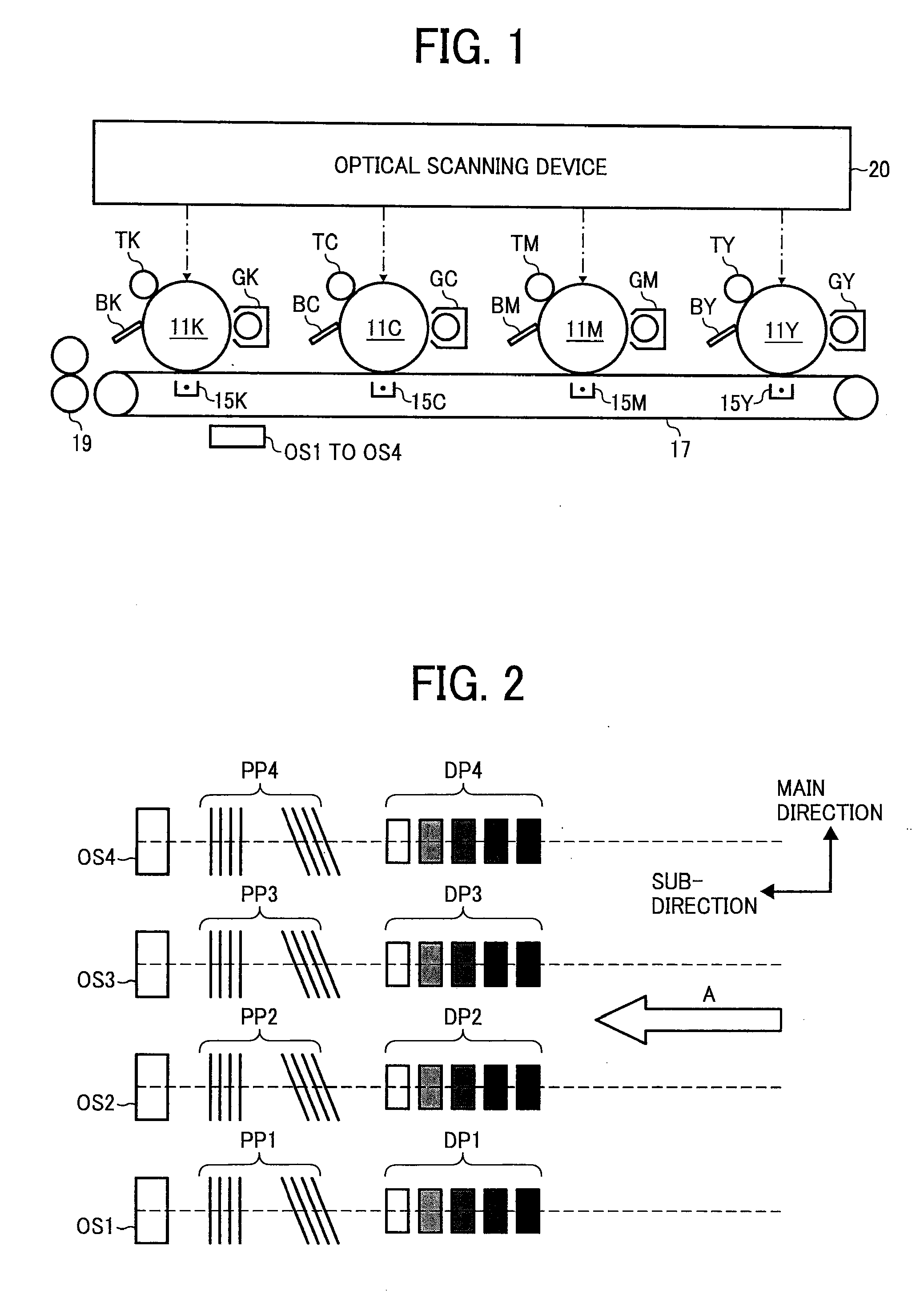Toner-density calculating method, reflective optical sensor, reflective optical sensor device, and image forming apparatus
a technology of toner density and calculating method, applied in the direction of optical radiation measurement, instruments, specific gravity measurement, etc., can solve the problems of difficult to always keep, difficult toner density measurement, and distortion of toner imag
- Summary
- Abstract
- Description
- Claims
- Application Information
AI Technical Summary
Benefits of technology
Problems solved by technology
Method used
Image
Examples
first embodiment
[0070]An image forming apparatus according to the present invention is described with reference to FIG. 1.
[0071]The image forming apparatus illustrated in FIG. 1 is a color image forming apparatus; however, the following description will apply even to a monochrome image forming apparatus. A color image is formed with four toners including yellow (Y), magenta (M), cyan (C), and black (K).
[0072]The image forming apparatus includes an optical scanning device 20. The optical scanning device 20 can be any widely-known scanner.
[0073]The image forming apparatus includes drum-shaped photosensitive elements 11Y, 11M, 11C, and 11K as photoconductive latent-image carriers. The photosensitive element 11Y is used for forming a yellow toner image, the photosensitive element 11M is for a magenta toner image, the photosensitive element 11C is for a cyan toner image, and the photosensitive element 11K is for a black toner image.
[0074]The optical scanning device 20 writes images onto the photosensiti...
second embodiment
[0155]In the second embodiment illustrated in FIG. 4A, the light-emitting elements E1 to E15 and the light-receiving elements D1 to D15 that are aligned in the main-direction sequentially with beginning with the light-emitting element E1 and the light-receiving element D1. Moreover, the light-emitting elements E1 to E15 and the light-receiving elements D1 to D15 that are divided into a first group, a second group, and a third group. The first group includes the light-emitting elements E1 to E5 and the light-receiving elements D1 to D5; the second group includes the light-emitting elements E6 to E10 and the light-receiving elements D6 to D10; and the third group includes the light-emitting elements E11 to E15 and the light-receiving elements D11 to D15. The light-emitting elements of each group are aligned in a single line, and the light-receiving elements of each group are aligned in a single line. When the reflective optical sensor is in position to measure the toner density, the l...
third embodiment
[0159]In the third embodiment illustrated in FIG. 4B, when the reflective optical sensor is in position to measure the toner density, the light-emitting elements E1 to E15 and the light-receiving elements D1 to D15 are aligned in a single direction that is inclined to the main-direction at an angle α. The angle α is decided based on the velocity of the supporting member moving in the sub-direction.
[0160]More particularly, if the angle α satisfies a following Equation:
Z·tan α=V·st
where st is scanning time, Z is the length in the main-direction of lines on which the light-emitting elements E1 to E15 and the light-receiving elements D1 to D15 are aligned, then the spot scanning of the toner pattern by the light-emitting elements E1 to E15 is completed within the scanning time.
PUM
 Login to View More
Login to View More Abstract
Description
Claims
Application Information
 Login to View More
Login to View More - R&D
- Intellectual Property
- Life Sciences
- Materials
- Tech Scout
- Unparalleled Data Quality
- Higher Quality Content
- 60% Fewer Hallucinations
Browse by: Latest US Patents, China's latest patents, Technical Efficacy Thesaurus, Application Domain, Technology Topic, Popular Technical Reports.
© 2025 PatSnap. All rights reserved.Legal|Privacy policy|Modern Slavery Act Transparency Statement|Sitemap|About US| Contact US: help@patsnap.com



